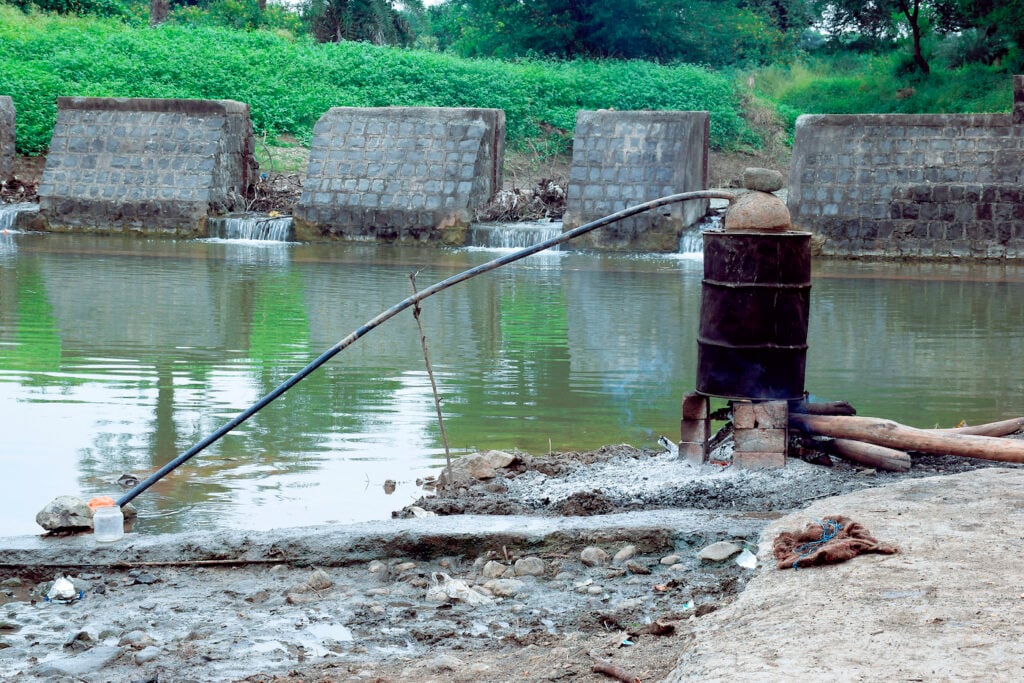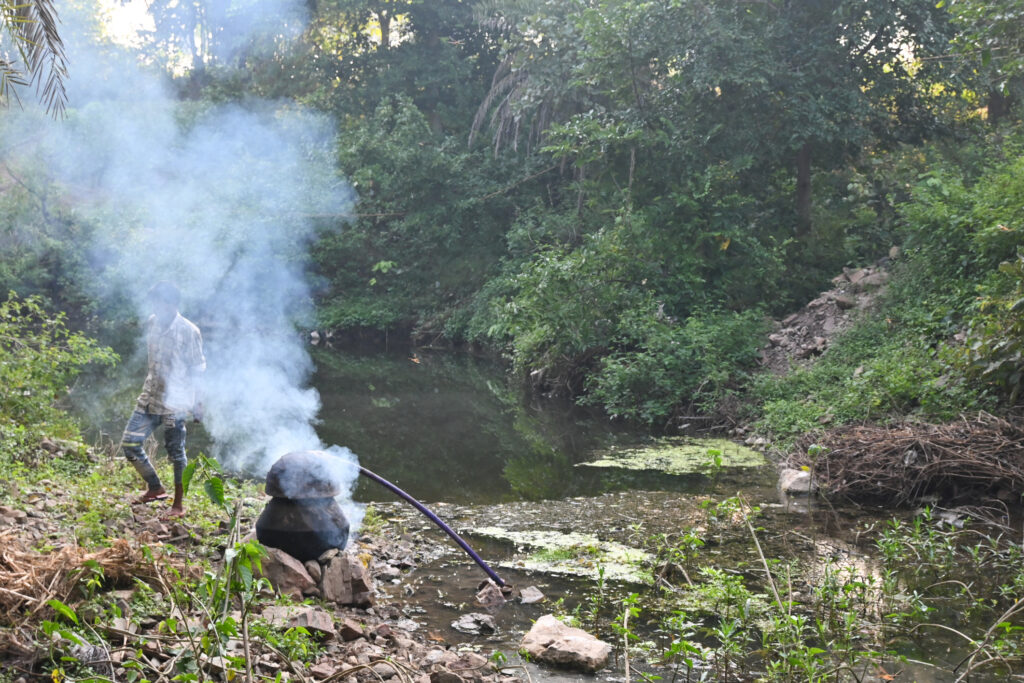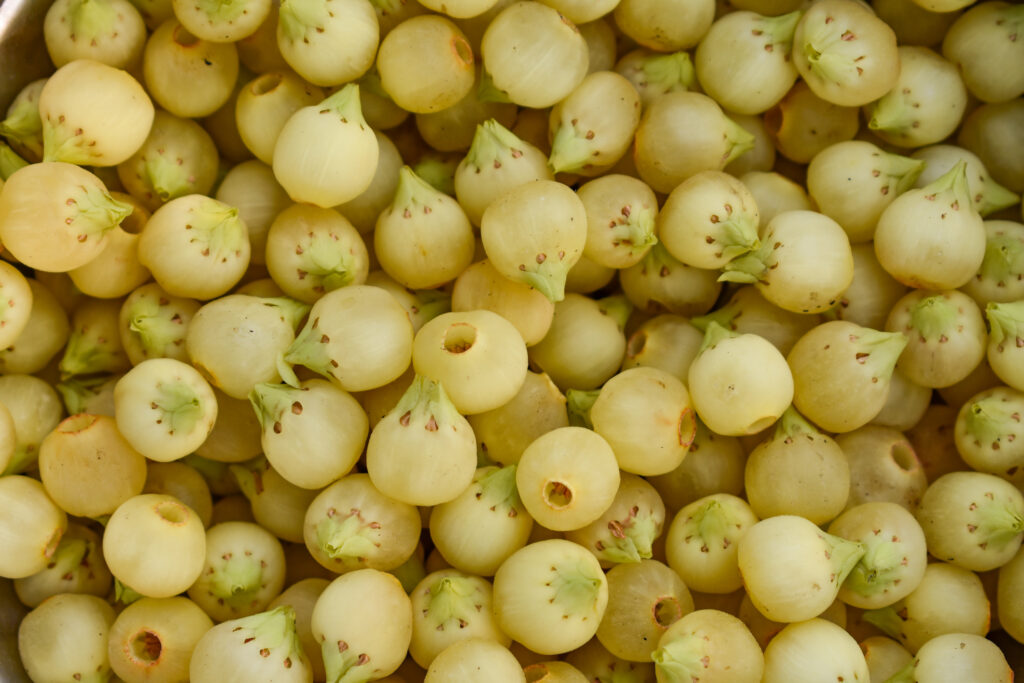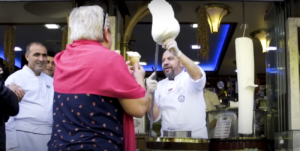Mahua is a sweet, floral liquor native to India. You might not have heard of it before, but it has been consumed for centuries. It was a regular part of daily life for Indian tribes, the main ingredient growing on trees abundant in the country, yet when the colonial British Raj took power in India, they outlawed drinking mahua.
Now, despite still government restrictions, mahua is making a comeback.

The alcoholic beverage is just one of the offerings of the mahua tree, often known as the “Tree of Life” according to tribes such as the Santhal, Gond, Munda and Oraon. It is commonplace across swathes of India, with its fruits, flowers, leaves and branches used for lots of different purposes, from food and drink to medicine, fuel, cattle fodder and even currency.
There is no fixed way to make the drink mahua, but it is usually made through an eight-day brewing process involving three different pots and a tube. The main pot contains mahua tree flowers fermented with yeast and brewed over the fire. On top of this, sit two more pots condensing the spirit, infusing it with the mahua. The flowers are already high in natural sugar, with as much as 68% to 72% sugar content, but cane sugar is often added to increase the alcohol and sweetness. More liquid can be added and should be met with white flames, signifying the purity of the mahua spirit. The product runs through a tube and into a container.

This was a process that was carried out for centuries, with families and tribes across India distilling and selling mahua liquor until the mid-to-late 1800s. Then lawmakers during the British Raj deemed it a danger to public health and morality, looking for another slice of the financial pie by shipping in foreign alcoholic alternatives. The drink became the subject of legislation, banning the distillation of the flowers, as well as limiting their collection and storage. Two major acts were the Bombay Abkari Act of 1878, and 1892’s Mhowra Act.
As is often the case with prohibition, these laws did not mean that mahua production dried up entirely. It did mean, however, that the product got worse. Fewer mahua flowers allowed to be stored meant more foreign substances were added when the drink was made. The more foreign substances were added, the more lawmakers objected to the drink, deeming it a dangerous intoxicant and prioritizing alcohol imported from other countries – like, say, Britain.

Speaking to the BBC in a story on mahua prohibition, Dr. Erica Wald, a modern history professor at the University of London, said: “While some colonial officials recognized the cultural and nutritional importance of indigenous drinks like mahua, the threat to revenue took precedence.”
Yet when India gained independence in 1947, it was not a watershed moment for mahua. Far from it. This was because of a few factors. One was that “the state remained closely associated with the monopoly on sale and production of alcohol just like the erstwhile colonial rulers, and mahua remained under stringent laws and limitations,” according to Wald.
Read More: Nacional | The mission to save the world’s rarest chocolate
There also remained a social stigma, with 20th-century Indian elites looking down on tribal traditions. “It tells you the nature of post-independence Indian elites who were highly disdainful of the lifestyles of the indigenous population,” Krishnendu Ray, professor of food studies at New York University told the BBC. “It ended up producing a lot of mediocre, homogenous stuff that shaped the Indian liquor industry.”
As a result, distilling mahua remained illegal, and it is only in recent years that the drink has begun to make a resurgence. This has been through a combination of fresh entrepreneurship, and a rising appreciation of tribal traditions. Gradually, restrictions and laws are being loosened to allow the fresh making and selling of mahua.
One successful new brand is DesmondJi, launched in 2018 by Desmond Nazareth and Conrad Braganza. Placing Indian heritage and tribal tradition at the heart of their brand, it was still originally classified as an Indian Made Foreign Liquor (IMFL) and not even allowed in most of the country. Eventually, however, it was given the Indian Made Liquor (IML) tag in Goa, after much government persuasion, making it easier to sell and produce.

“From the very beginning of our mahua journey, we have been vocal for a policy change to create the ‘state heritage liquor’ and when the MP government did the same, it seemed our effort is of some use,” Nazareth told Down To Earth.
Even as the pair hope to expand across more of India and eventually internationally, the values remain the same. They source food-grade mahua flowers from Jharkhand, Chhattisgarh, Madha Pradesh and Odisha. They work directly with tribal groups, paying a premium price compared to a market rate.






2 Comments
To add to Bali’s comment, the pictures which you have posted to illustrate the mahua fruit and its “primitive” production enhance the quality and effectiveness of your story. By providing a link to Down to Earth, you enable those curious to find out a little more. You might have impressed me even more if you had given the website of DesmondJi.com, don’t you think?
Your composition expertly makes complex topics accessible.
I appreciate the commitment you display in clarifying this subject
without compromising on depth.